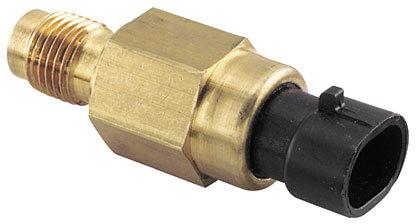Engine cooling system: device, operating principle, malfunctions
The engine cooling system is one of the mostits important elements. Without it, the high temperatures that occur when the fuel mixture burns, simply will not allow it to work. What are the components of the cooling system, and what are the main problems?
The device and the principle of operation
First, we'll deal with the device. The modern system of cooling the car, more precisely, the car engine, supports the necessary operating mode with the help of a special coolant that circulates through the water jacket - special cavities in the cylinder block. In addition to the shirt, the cooling system includes: a radiator, a thermostat, a liquid pump, branch pipes, a fan, a filler neck. The radiator is a device that cools the fluid by the counter flow of air pumped by the fan. Thermostat - a valve device that regulates the circulation of cooling liquid in the cooling system. The pump and the fan are usually driven by drive belts. This is the way the liquid engine cooling system is used on most modern cars.
How does the engine cooling system work? During start-up, the thermostat valve is in the closed position, which allows the liquid to circulate through the so-called small circle - the pump drives it only by the water jacket. When the engine warms up and the fluid temperature reaches 80-95 degrees Celsius (depending on the engine model), the thermostat valve opens and the fluid enters the radiator from the cylinder head. This mode of circulation is called a large circle. Passing through the radiator, the liquid cools and gets to the pump. So the engine cooling system maintains its normal operating mode.
Malfunctions
Now about the malfunctions. They can be caused by both natural wear and tear of individual components during operation, and by untimely maintenance. For example, overheating of the engine can occur due to the wear of the thermostat valve (it starts to open with a delay or very early), and because the radiator hoods are clogged with dirt. What must be done to prevent premature repair of the engine cooling system?
First of all, regularly inspect the engine andkeep it clean. Pay attention to the level of coolant in the expansion tank. If it has decreased, check the tightness of the pipes connecting the radiator with the water jacket. It is possible that they flow. The place of leakage can be sealed with a sealant, but it's better not to regret money and buy a normal collar. On the loss of tightness of the system can also indicate the boiling of the liquid at a temperature above 105 ° C. As for the radiator, it is recommended to clean it regularly from dirt, rinse the tubing with clean water when clogging, lubricate the curtain shutters with graphite grease. Overheating of the engine in the summer can be caused by a malfunction of the pump or fan. As for these components, always check the tension of the drive belt and, if necessary, adjust it.
Also pay attention to the coolant. Since antifreeze is required to be diluted in a certain proportion with water, watch for the water that you are adding. In no case should you fill the system with tap water. This will speed up the formation of scale in the system. Dilute the antifreeze with distilled water only! Also, experts recommend adding a special anti-corrosion additive to the coolant to reduce the corrosive effect of water on the engine. If the scum does appear (you can see it when washing the radiator), then do chemical cleaning. For this purpose, there are special drugs. Scale can also occur in the area of the drain hole - in this case it is necessary to clean it with a wire and then blow it out with compressed air.
</ p>



